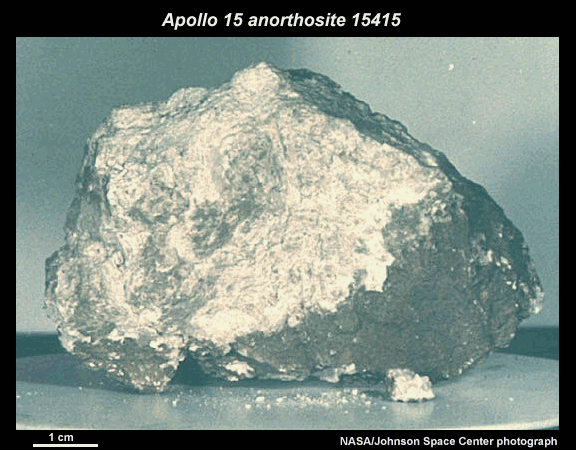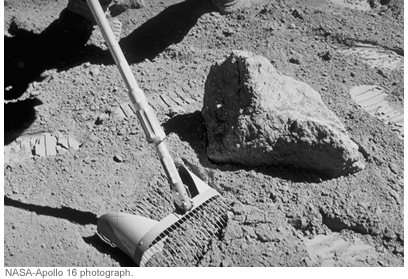The Moon and its rocks
The Moon is near enough to see well with binoculars, and its main features stand out clearly.
The same side faces Earth all the time, so the far side was unknown until space-probes photographed it in the late 1950s.

Most maps of the Moon use Latin names for the features, but it is interesting to see the names in English.
The dark areas were called seas (maria) and oceans when nothing was really known, but they are actually large, mainly flat, areas of basalt lava.
 Notice the gas bubbles in the basalt lava
Notice the gas bubbles in the basalt lava
The highland areas are lighter in colour, and made of anorthosite rock.

The surface is covered by fine dust, mixed with rock fragments and glass beads.
This lunar 'soil' is usually referred to as regolith.

The tiny glass beads were formed when meteors hit the moon and caused rock so melt.
The molten material flew up and cooled quickly in the cold airless lunar environment to make drops of glass.
The same side faces Earth all the time, so the far side was unknown until space-probes photographed it in the late 1950s.

Most maps of the Moon use Latin names for the features, but it is interesting to see the names in English.
The dark areas were called seas (maria) and oceans when nothing was really known, but they are actually large, mainly flat, areas of basalt lava.
 Notice the gas bubbles in the basalt lava
Notice the gas bubbles in the basalt lavaThe highland areas are lighter in colour, and made of anorthosite rock.

The surface is covered by fine dust, mixed with rock fragments and glass beads.
This lunar 'soil' is usually referred to as regolith.

The tiny glass beads were formed when meteors hit the moon and caused rock so melt.
The molten material flew up and cooled quickly in the cold airless lunar environment to make drops of glass.